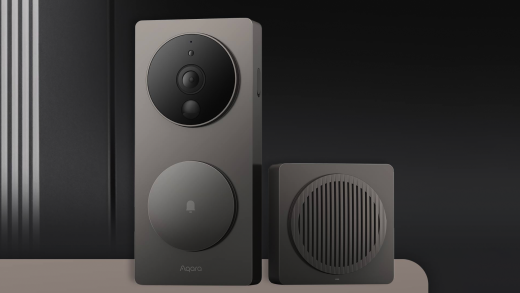Sure, electric air purifiers are great, but what about the original air-purifying “devices?” Good old air-purifying houseplants have been taking our carbon dioxide and other pollution and chemicals and turning it into oxygen since, well, the dawn of time. Whether you’re already a houseplant parent or are just getting into the indoor gardening hobby (welcome!), there’s an air-purifying plant perfect for sprucing up your indoor spaces.
Do air-purifying indoor plants really clean the air in your home?
Whether at home or at work (and doubly so if those are the same place), most of us spend the vast majority of our time indoors, so it matters if the air we’re breathing is clean. However, most of us can’t really tell whether our indoor air is clean or not, sans those living with asthma or other breathing conditions, perhaps.
But imagine if you were inside 100% of the time. And floating through oxygen-deprived outer space like, say, an astronaut. Then, clean air would absolutely be on the top of your list.
That’s the precise reason why NASA teamed up with the Associated Landscape Contractors of America in 1989 to research ways to clean the air in space stations. It was already well-known that plants could absorb carbon dioxide and release oxygen through the act of photosynthesis, but the researchers were hoping to find out if they could do even more.
According to NASA’s Clean Air Study, the initial testing of a dozen different potentially air-purifying indoor plants — including the peace lily, Chinese evergreen, bamboo palm, and gerbera daisy — found that certain plants may provide a natural way of removing up to 90% of volatile organic pollutants from our air by pulling them into and trapping them within their own roots and cells. They’re then broken down in the soil or simply stored in the plant.
The only caveat? You’d probably need hundreds of the best air-purifying indoor plants in your home to achieve maximum effectiveness. That may be a welcome challenge for some plant lovers, but it’s probably not ideal for most folks. However, every little bit helps, so having even a few of the best air-purifying plants could still have an impact. (Not to mention they’re more natural and cost-effective than electric air purifiers, too.)
What kinds of chemicals do air-purifying indoor plants take out of the air?
NASA’s initial study pumped benzene, formaldehyde, and trichloroethylene into small spaces with common house plants to see how the plants would be able to combat indoor air pollution and effectively remove these carcinogens — substances that can cause cancer in humans — from the air. While you probably (hopefully?) don’t have a cabinet full of these contaminants ready to spray around your home just for funsies, these volatile organic compounds (or VOCs) can be found within a lot of common household products — far more than you may even realize.
VOCs are man-made chemicals often used in and produced by the manufacture of things like paint, pharmaceuticals, and refrigerants. So you’d encounter these in your home when you’re painting, of course, but they can also be emitted when using cleaning supplies and pesticides. But even stuff like copiers, printers, Wite-Out, permanent markers, nail polish, air fresheners, photographic solutions, and craft materials such as glues and adhesives can emit VOCs, making air-purifying indoor plants a great fit for home offices and art hobby rooms.
Are there other benefits of air-purifying indoor plants?
NASA admits that more research is needed when it comes to plants eliminating or reducing VOCs. But researchers have found that air-purifying indoor plants can also effectively reduce mold, mildew, and bacteria by releasing phytochemicals that suppress them.
The presence of houseplants in our living and working spaces can also be incredibly soothing and stress-relieving — like nature’s little antidepressants. This therapeutic mood-boosting and fatigue-fighting effect can help us feel more productive, and may even enhance concentration and memory. This isn’t because they release anything special into the air, however, but simply because they’re nice to look at and care for.
So, not only do air-purifying plants do the heavy lifting to enhance our indoor air quality and make it better for us to breathe, but they also double as really incredible home decor, too! Beauty and brawn rolled into one? We love to see it.
What are some of the types of indoor plants that clean the air?
The best indoor plants for clean air include the peace lily, spider plant, snake plant, Boston fern, bamboo palm, golden pothos (aka Devil’s Ivy), aloe vera, Chinese evergreen, English ivy, rubber plant, flamingo lily, and money plant — or money trees. Chrysanthemum (aka “mums”) and gerbera daisy are also fantastic indoor plants that clean the air — and they’re quite pretty, to boot — but are more difficult to ship, so you may want to pick them up locally or grow them yourself with seeds.
Gerbera daisies, English ivy, and snake plants, in particular, have larger surface areas that are ideal for sucking the bad stuff out of the air. That said, any of the best air-purifying indoor plants that grow big and tall (or long) and/or have large leaves should be an effective choice to act as a natural air purifier in the home. Snake plants also tend to be really easy to care for — requiring just a little indirect light and water only when its soil is completely dry — so no worries if you haven’t got a green thumb.
With that in mind, we’ve rounded up a selection of the best air-purifying plants you can buy to combat indoor air pollution in your home. Whether your indoor conditions are chock full of direct sunlight and bright spaces or shaded corners and indirect light, you’re sure to find the perfect air-purifying indoor plants among this list of the best indoor plants for clean air.
Source : The best air-purifying indoor plants are easy to find — here are our picks













